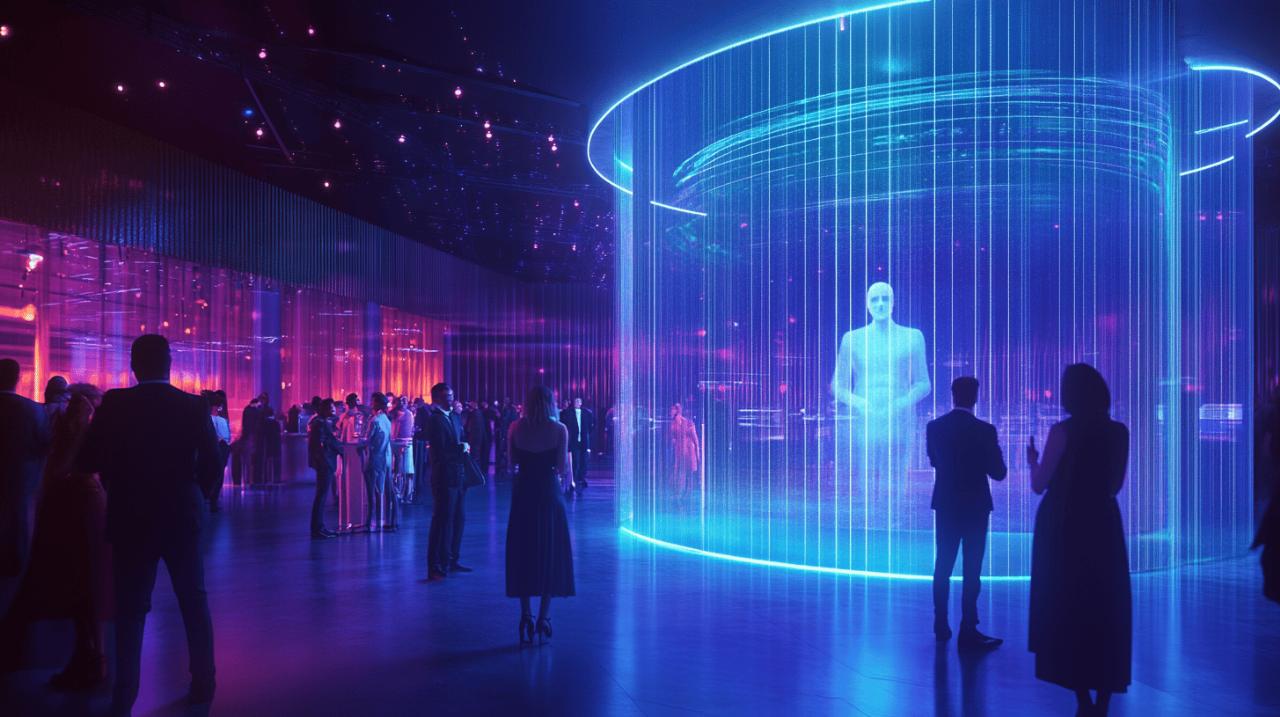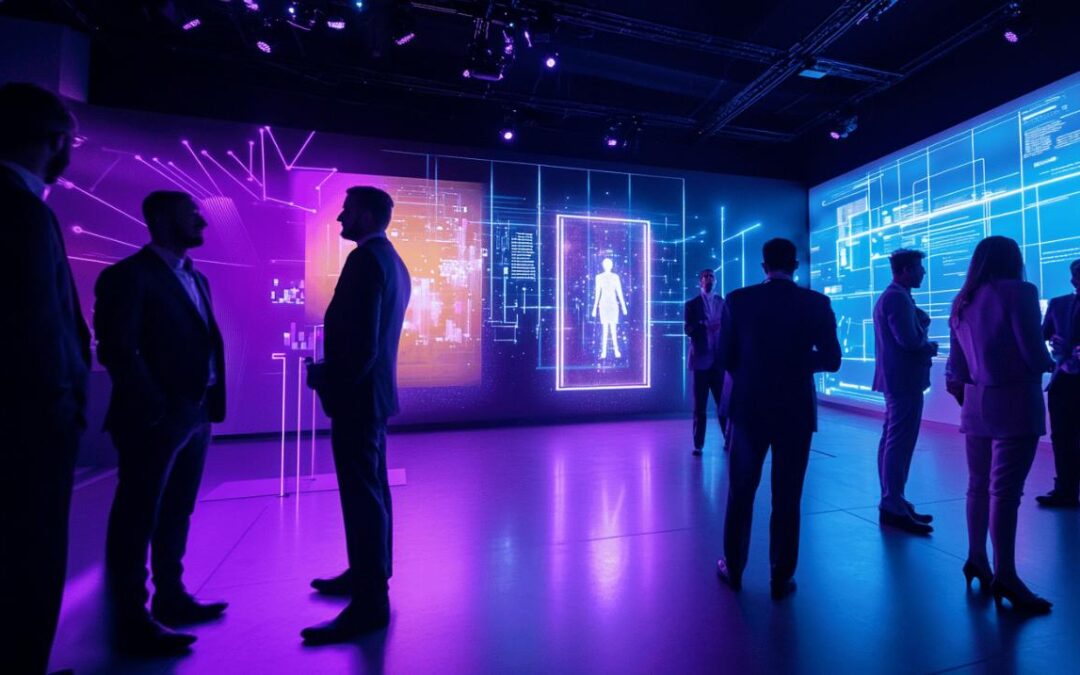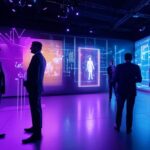The landscape of event engagement is experiencing a remarkable transformation as organisers seek innovative methods to captivate audiences and deliver unforgettable experiences. Traditional static displays and conventional presentation formats increasingly struggle to hold attention in an era where attendees expect dynamic, participatory interactions. Emerging technologies now offer compelling alternatives that blend the physical and digital realms, creating opportunities for brands to forge deeper connections with their audiences whilst simultaneously driving commercial outcomes. The integration of tactile three-dimensional holographic technology represents one such breakthrough, offering event organisers a powerful tool to differentiate their offerings and create lasting impressions that extend well beyond the duration of the event itself.
Transforming event experiences through interactive holographic technology
The evolution of event engagement beyond traditional displays
The progression from passive observation to active participation marks a fundamental shift in how audiences interact with content at events. Whilst conventional screens and printed materials have served their purpose for decades, they lack the dimensional presence and tactile feedback that contemporary audiences increasingly expect. Holographic marketing has emerged as a response to this demand, utilising advanced projection techniques to generate three-dimensional images that appear to float in mid-air without requiring special glasses or headsets. This technology creates a visual spectacle that naturally draws attention, transforming ordinary exhibition spaces into memorable showcases that attendees feel compelled to explore and share with their networks.
The mechanics behind these captivating displays involve sophisticated ultrasound projection systems that create tangible shapes in space, allowing individuals to interact with digital content through physical touch. Some implementations utilise rapidly moving polystyrene beads travelling at considerable speeds, combined with LED arrays to produce colourful, dynamic presentations. This fusion of tactile feedback and visual splendour generates an engagement level that static displays simply cannot match. Research indicates that augmented reality activations can increase audience engagement by as much as seventy percent at live events, with attendees spending two to three times longer interacting with these installations compared to traditional static displays.
Creating memorable moments with tangible digital interactions
The psychological impact of being able to physically manipulate digital content creates a profound connection between the audience and the presented material. When attendees can rotate, zoom, and explore holographic representations with their own hands, they transition from passive observers to active participants in the narrative. This sensory engagement creates stronger memory formation, as the combination of visual, tactile, and kinesthetic learning channels reinforces the experience. For brands seeking to establish lasting recognition, this multi-sensory approach delivers substantially better recall rates than conventional marketing materials.
The versatility of these installations extends across numerous event types, from intimate product launches to sprawling trade shows and corporate conferences. At business gatherings, holographic displays can project speakers from remote locations, significantly reducing travel expenses whilst maintaining the presence and impact of in-person presentations. For public exhibitions, these technologies can transform educational content into interactive experiences that engage visitors of all ages, making complex information accessible through exploration rather than explanation. The inherent shareability of these experiences further amplifies their value, as attendees naturally document and distribute their interactions across social media platforms, generating organic visibility that extends the event's reach far beyond the physical venue.
Strategic Applications of Tactile Holograms for Product Marketing
Revolutionising product demonstrations through three-dimensional touch
Traditional product demonstrations often struggle with practical limitations such as fragility, size constraints, or the inability to showcase internal mechanisms without destructive disassembly. Holographic projections elegantly sidestep these obstacles, allowing brands to present their offerings in ways previously impossible. Attendees can virtually disassemble products to examine internal components, enlarge minute details for closer inspection, or view items at scales that would be impractical in physical form. This capability proves particularly valuable for industries dealing with complex machinery, architectural projects, or products still in development stages where physical prototypes may not yet exist.
Major brands have already demonstrated the commercial potential of this approach. Automotive manufacturers have showcased vehicles through holographic displays, allowing potential customers to explore features, change colours, and examine engineering details without requiring multiple physical units on the exhibition floor. Fashion retailers have implemented virtual mannequins that display clothing from every angle, whilst electronics companies enable customers to interact with product interfaces before making purchase decisions. These applications reduce logistical complexities whilst simultaneously providing richer, more informative experiences than traditional display methods could achieve.
Generating social media buzz and amplifying brand visibility
The spectacular nature of holographic technology naturally compels attendees to capture and share their experiences, creating a powerful amplification effect that extends brand visibility far beyond the event itself. Social media platforms have become integral to modern marketing strategies, and content that demonstrates novelty or technological sophistication tends to generate substantial organic reach. Snapchat alone reports over three hundred fifty million users engaging with augmented reality lenses daily, illustrating the massive appetite for interactive digital content. When brands create shareable holographic experiences, they effectively transform event attendees into content creators and brand ambassadors who voluntarily distribute marketing materials to their personal networks.
This viral potential translates into measurable commercial value, as the content generated by attendees carries the authenticity and credibility that paid advertising often lacks. The combination of visual impact, interactive elements, and the novelty factor creates ideal conditions for social media virality, generating free publicity that can substantially offset implementation costs. Brands that strategically design their holographic installations with shareability in mind frequently achieve return on investment that exceeds traditional marketing expenditures, as a single successful activation can generate millions of impressions across various platforms.
Maximising Return on Investment with Holographic Event Solutions
Converting visitor engagement into measurable sales opportunities
 The extended interaction time that holographic displays generate provides valuable opportunities for meaningful conversations and relationship building between brands and potential customers. Whilst a conventional booth might capture attention for mere seconds, interactive holographic experiences regularly hold attention for several minutes, creating windows of opportunity for sales teams to engage in substantive discussions. This prolonged engagement period allows for more thorough product education, needs assessment, and relationship development than brief encounters at traditional displays permit.
The extended interaction time that holographic displays generate provides valuable opportunities for meaningful conversations and relationship building between brands and potential customers. Whilst a conventional booth might capture attention for mere seconds, interactive holographic experiences regularly hold attention for several minutes, creating windows of opportunity for sales teams to engage in substantive discussions. This prolonged engagement period allows for more thorough product education, needs assessment, and relationship development than brief encounters at traditional displays permit.
The data collection capabilities embedded within these systems offer additional commercial advantages. Interactive displays can track which features attract the most attention, how long visitors engage with specific elements, and which pathways through the experience prove most popular. This behavioural data provides invaluable insights for refining marketing messages, product development priorities, and future event strategies. The combination of enhanced engagement, extended interaction time, and actionable data creates a compelling value proposition that justifies the initial investment for organisations serious about maximising event outcomes.
Cost-effective implementation strategies for various event scales
Whilst cutting-edge technology might initially appear prohibitively expensive, the holographic display market now offers options suitable for various budgetary constraints. Entry-level hologram fan displays can be acquired for relatively modest investments, making the technology accessible even to smaller organisations exploring innovative engagement methods. For businesses preferring to minimise capital expenditure, rental options provide access to sophisticated systems for specific events, with costs scaling according to duration and complexity requirements.
The financial case strengthens when considering the operational savings these technologies enable. Holographic displays significantly reduce or eliminate printing costs for brochures, posters, and other disposable marketing materials. They also minimise the need for multiple physical product samples, reducing transportation expenses and logistical complications. For organisations conducting frequent events, the cumulative savings from reduced material costs, combined with enhanced engagement outcomes, typically result in favourable return on investment within reasonable timeframes. Projection mapping represents another cost-effective approach, utilising existing architectural features as display surfaces and transforming ordinary spaces into extraordinary experiences without requiring extensive custom installations.
Practical implementation guide for tactile holographic displays
Technical Requirements and Setup Considerations for Events
Successful integration of holographic technology requires careful assessment of venue characteristics and technical capabilities. Lighting conditions play a crucial role in hologram visibility, as excessive ambient light can diminish the impact of projections. Venues with controllable lighting environments generally deliver superior results, though modern systems increasingly accommodate varied lighting scenarios. Spatial requirements vary depending on the chosen technology, with some installations requiring minimal footprint whilst others benefit from larger zones that allow multiple simultaneous users and optimal viewing angles.
Power requirements, network connectivity, and structural mounting considerations must be addressed during planning stages to ensure smooth implementation. Consultation with experienced providers proves invaluable in navigating these technical considerations, as they can recommend appropriate solutions based on specific venue constraints and event objectives. Response times for technical support should factor into planning, with reliable providers typically offering assistance within twelve hours or less to address any complications that arise during setup or operation. Thorough advance planning and coordination with technical specialists substantially reduce the risk of implementation challenges that could compromise the event experience.
Best practices for designing interactive holographic content
The content displayed through holographic systems requires thoughtful design to maximise engagement and effectiveness. Visual elements should leverage the dimensional capabilities of the medium, utilising depth, rotation, and spatial positioning to create compelling narratives that justify the technological investment. Content that merely replicates what could be shown on a conventional screen fails to capitalise on the unique advantages of holographic presentation. Instead, designers should craft experiences that invite exploration, reward curiosity, and guide users through carefully structured journeys that communicate key messages whilst maintaining engagement.
Interactive elements must strike a balance between intuitive operation and sophisticated functionality. Overly complex interfaces frustrate users and reduce participation, whilst overly simplistic interactions fail to sustain interest. Successful implementations typically incorporate progressive complexity, offering immediate accessibility for casual participants whilst providing deeper layers of information for those who choose to explore further. Regular testing with representative audience members during the development process helps identify usability issues and refine the experience before deployment. The global beauty technology market, projected to reach one hundred seventy-two billion pounds by twenty thirty, demonstrates the commercial potential of well-executed interactive digital experiences across various industries, validating the strategic value of investing in compelling content design for holographic installations.
The integration of tactile three-dimensional holograms represents more than mere technological novelty; it constitutes a strategic approach to event engagement that delivers measurable improvements in attention, interaction duration, and commercial outcomes. As the technology continues to mature and become more accessible, organisations that embrace these capabilities position themselves at the forefront of experiential marketing, creating memorable moments that strengthen brand recognition and drive profitability. Whether implementing modest installations for focused demonstrations or comprehensive systems for large-scale activations, the fundamental principle remains consistent: audiences respond powerfully to experiences that invite participation, reward interaction, and blur the boundaries between physical and digital realms.




